Family
Tree & History of the
ASM-N-2 BAT Glide Bomb
Scott C. Pedersen
(Copyright 2009)
NOTE:
This is very much a work in progress and is a teaser for book
project that is nearing completion.
The material herein is a but small fraction of those archival
materials that exist in my collection.
Nevertheless, further information is requested from Aircrews
and personnel who have had
experience with these systems. Additional photographic contributions
are appreciated!
First
publication - Pedersen & Siegfried, 1996, BRN 37:42-48
Update/move to new domain completed April 20, 2009
Last
edited March 2012
This
page is GRAPHIC intensive - Please allow time for all images
to load!!! -
|
| 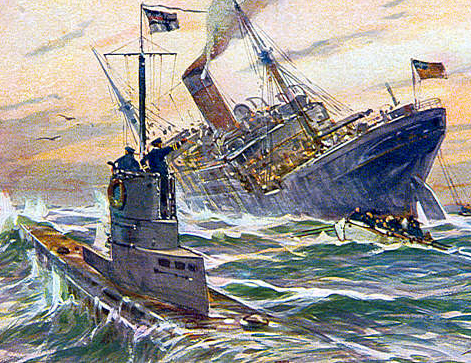 PROBLEM PROBLEM
Early in
World War II, German U-boats were sinking alarming numbers of
Allied freighters & oil tankers along the eastern seaboard
of the United States, with a peak of around 80 ships being sunk
per month. This was clearly a National emergency & we needed
a technological miracle. Since noisy patrol aircraft could not
“sneak up” on these enemy submarines in order to
attack them successfully, a stand-off, glider-type weapon was
proposed. Ultimately, the BAT air-to-surface missile
(ASM-N-2: Special Weapons Ordnance Device - SWOD Mk 9) was the
first fully automatic guided-missile to be used operationally
by any of the combatants during WWII (first combat drop: April
23, 1945; first combat success: April 28, 1945) and was active
in the arsenal of the United States Navy from 1945 through 1953.
During the latter parts of WWII, there were many wire-, radio-,
and television-guided bombs, either glider-type or self-propelled,
that were used by the Germans and Americans (e.g., Henschel
Hs-293, GB-4), however, the BAT was the very first, fully-automatic,
weapon system, the archetype of what we now term "fire
and forget" weaponry. Once launched, the BAT went
solo, guided to its target by an early S-band radar unit (see
below), developed by the Bell Telephone Laboratories.
|

|
BIRDS
OF A FEATHER
A family
of Secret Weapons was designed for the US Navy by Hugh Dryden
(who won the Presidential Certificate of Merit for his work
on the Project) and a very creative aerodynamicist named Hunter
Boyd.
This family of gliders shared a similar layout/planform and
were constructed primarily of plywood (in many cases by the
Wurlitzer Organ Co./ Vidal Research Co.) & employed elevons
attached to swept-back wings. Several different guidance technologies
were evaluated for use in these gliders: radio-control, television,
& radar. It should be remembered that in 1941, these “Buck
Rogers” technologies were still very much in their own
developmental infancy.
It should
also be noted that the BAT project ranked with the Manhattan
project (atom bomb) and the proximity fuse as being one of the
very few entirely new weapons in WWII.
DEVELOPMENT
TEAM (L>R)
RC Newhouse
(Bell), HK Skramstead (NBS)
O. McCrackin (BuAer), DP Tucker (BuOrd)
LP Tabor (BuOrd), HL Dryden (NBS)
H. Boyd (NBS), R Lamm (MIT)
|
| |

|
RUMOR
ABATEMENT
Contrary
to several popular articles, none of these devices had a TRUE
tail elevator - rather these gliders were equipped with a
small trim-tab to maintain missile attitude that was in turn
controlled by various types of autopilot found in the different
BAT mods (primarily mod-0). All directional control (climb,
dive, bank) was performed by the elevons on the main wing.
The various projections from the airframe have frequently
been misconstrued as air-driven generators, but they were
in fact either venturi tubes that drove the gyroscopes or
were spinner-type/bomb fuses that spun off, thereby arming
the bomb in flight.
A variety
of schemes were tossed around in which only two BATs would
be carried beneath the wings of an aircraft (PBJ, PV-1, PV-2,
PB-1, PB4Y-1, PB4Y-2b, PBM, PBY) but this load of 2 BATs was
primarily dictated by safety/combat-range issues. Other combinations
of PELICAN and BAT missiles were investigated wherein a PBJ
could be outfitted with 2 BATS in the bomb-bay and two PELICANS
beneath the wings. This huge load would obviously make long-range
patrol activity impossible, but one might consider the impact
of a short-range sortie wherein a single a/c could drop four
devices against a convoy. Ex: PV-1 at right carries three
Mk 16 targets
|
|
DEVICE |
Wing
span |
Bomb
Mark |
SWOD |
Comments |
Air
stabilizer |
| Dryden/Dragon
|
12'0" |
|
|
Radio
|
14:0 |
| Robin
|
12'0" |
|
|
Television |
14:0 |
| Falcon
(Rocket/Air to ground) |
8'5"
|
|
|
RHB |
12:0 |
| Mk16
AA target (Vulture?) |
8'5"
|
|
|
Radio |
12:0 |
| Moth
|
8'5"
|
|
|
Enemy-RHB |
12:0 |
| Moth
(Big) |
12'0" |
|
|
Enemy-RHB |
14:0 |
| Pelican
Mk 1 |
8'5"
|
55:0 |
Mk
7.0 |
RHB |
12:0 |
| Pelican
Mk 2 |
8'5"
|
55:1 |
Mk
7.1 |
RHB |
12:0 |
| Pelican
Mk 3 |
10'2" |
56:0 |
Mk
8.0 |
RHB |
13:0 |
| Pelican
(Big) |
12'0" |
56:1 |
|
RHB |
14:0 |
| Poor
Man's Bat |
10'2" |
|
|
SRB |
13:0 |
| BAT-0
(ASM-N-2) |
10'2" |
57:0 |
Mk
9.0 |
SRB |
13:0 |
| BAT-1
(ASM-N-2A) |
10'2" |
57:1 |
Mk
9.1 |
SRB |
13:0 |
| Bat
(Big) |
12'0" |
69:0 |
Mk
10.0 |
SRB |
14:0 |
| Kingfisher
A |
10'2" |
|
Mk
11.0 |
|
(?)
14:0 |
| NOLC
Corvus |
10'2" |
|
|
|
13:0 |
|
WHAT'S
IN A NAME - DEVICE
DESIGNATIONS
How
does one name secret weapons? Official Navy doctrine concerning
missile-nomenclature dictated that “air-to-surface missiles
are to be given names that refer to birds of prey”. BATs,
PELICANs, ROBINs, MOTHs, and DRAGONs are not
‘birds of prey’ per se – I am not
entirely sure how the Military missed this subtle zoological
nomenclatural point.
There
were three basic airframes (air stabilizers 12:0, 13:0, 14:0)
that varied primarily in size (8'5" > 12'0" wing
span) and capacity (325# depth charges > 2000# GP bombs).
Several of these designs were terminated early in their development,
whereas others were dropped by the USN but picked up by the
Army Air Corps for further development (e.g., ROBIN, MOTH).
Abbreviations
found in adjacent table:
RHB - Radar-Homing-Bomb
SRB - Send-Receive-Bomb
'BIG'- System installation in one of the 12'0"
gliders
NOLC
- Naval Ordinance Lab - Corona |

|
DRAGON
(Radio-control:
Air Stabilizer 14:0) Wingspan: 12’0”, 2000 lb. bomb.
This device is sometimes referred to as the Dryden Bomb. It
was a large radio-controlled glider that was to carry a 2000
lb. bomb against ships. Very few were tested & the project
was terminated because if the pilot and his aircraft were to
accurately guide their missile onto the target, both were subjected
to anti-aircraft fire |

|
ROBIN
(Television-guidance:
Air Stabilizer 14:0), Wingspan: 10’2”, 1000 lb.
bomb. During February 1942, Hugh Dryden suggested using television
(RCA Iconoscope) as a remote guidance-aide for this glide-bomb.
These early cameras were VERY heavy & VERY expensive. The
ROBIN project was terminated by the US Navy early-on as there
were developmental issues with television camera resolution
& the strength/range of the transmitted signal. The Army
Air Corps developed a similar project in parallel. |

|
PELICAN
(Passive
Radar- Homing Bomb: Air Stabilizer 12:0); Wingspan:
8'5", 325 lb depth charge. Operationally, radar signals
would be projected onto the target by the launch-aircraft. The
PELICAN with its passive radar system would ‘home-in’
on the reflected radar signal. The device first flew March of
1942. However, while guidance problems were being solved, the
U-boat menace was being effectively emasculated by the USN and
ULTRA cryptanalysis. The Navy Brass became fixated
on the far 'sexier' device - BAT - and dumped the PELICAN
concept with very little fanfare. PELICAN returned to ‘experimental
status’ & terminated by the Navy in Sept. 1944.
|

|
PIGEONS
IN A PELICAN
(Organic
control); Wingspan: 8'5", 325 lb depth charge.
The PELICAN-ORCON Project attempted to solve early problems
with television & radar - both of which were easily defeated
by electronic jamming devices. However, Burrus Skinner convinced
the US Navy that birds had great potential as a jam-proof missile-guidance
system.
Pigeons
were trained to peck at an image of a target projected by a
lens onto a screen in the missile's nosecone – these signals
then corrected missile's flight-path. Pigeons produced excellent
results & were reliable under stressful conditions including
extremes in cold, vibration, acceleration, pressure, & noise.
Even though
this organic-control system worked extremely well, the Navy
would not provide Skinner with sufficient technical data (PELICAN
was still ‘TOP SECRET’), and Skinner had an almost
impossible task ‘guess-timating’ what electronic
inputs/voltages were required to control the gyroscopes &
servomechanisms in the PELICAN gyroscopes.
Due to no
fault of Skinner’s (nor of his pigeons), the Navy cancelled
the program early in 1945.
|

|
VULTURE
- MK 16 GUNNERY TARGET
(Air
Stabilizer 12:0)—Upon
cancellation of the PELICAN Project, the Navy was left with
a lot of spare PELICAN airframes. Several hundred were converted
to anti-aircraft targets in late 1944 and were dropped from
patrol bombers as they orbited above the fleet (i.e., PB-1's
certainly, others?). The high-angle dive of these sand-filled
targets provided an excellent simulation of Kamikaze attacks
and an excellent opportunity for Fleet gunners to practice their
skills before shipping out to the PTO. |

|
FALCON(?)
This
device is clearly a rocket-propelled Mk 16 target glider body
suspended beneath a Brewster SB2A a/c. The original photograph
was labeled as 'FALCON missile'. However, is this device really
a test-bed for the FALCON air-to-ground missile or is it the
rarely mentioned rocket-propelled version of the Mk 16 target
glider mentioned above? |

|
MOTH
(Anti-RADAR-Homing-Bomb:
Air Stabilizer 12:0) Wingspan: 10'2", 650 lb bomb. Upon
cancellation of the PELICAN, the Navy was left with hundreds
of PELICAN airframes. Several were converted into VULTURE anti-aircraft
targets (above) and many of these were subsequently
re-outfitted with antennae and radar receivers that could be
tuned to enemy radar frequencies. As real moths are attracted
to a flame, MOTH missiles would glide down the enemies’
own radar-signal to destroy the radar installations with its’
bomb. The Navy cancelled MOTH, but the Army Air Corps went on
to successfully develop its’ own version of the device.
|

|
Poor-Mans'
BAT (PMB)
(Air Stabilizer
12:0); Wingspan: 8'5", 325 lb depth charge. This design
was a very inexpensive and pragmatic modification of the PELICAN
radar system with its own radar sender (tube under nose cone)
and relied on the accuracy of the approach onto the target by
the mother-aircraft. This was a terrific idea that would have
had PMBs in the Pacific theater in late 1943, at least 1.5 years
ahead of BAT. Sadly, the Navy brass remained fixated on the
far 'sexier' device - BAT - and walked away from the
PMB concept. |
| 
|
ASM-N-2
BAT (SWOD Mk 9)
(Send-Receive-Bomb: Air Stabilizer 13:0); Wingspan: 10’2”,
1000 lb bomb. The BAT was a simple glide-bomb constructed of
steel & plywood (Wurlitzer Mfg.) primarily designed as an
anti-shipping weapon (1000 lb. GP bomb) with a gross weight
of 1,700 pounds. Like it’s namesake, the BAT had its own
internal radar with which to paint its’ target and it’s
own radar-receiver to pick up the echoes from it’s ‘prey’.
As such, BAT was the first fully-automatic target-seeking missile
used by any of the combatants during WWII – the World’s
first “smart-bomb”. |

|
NOLC-Corvus
After the
war, the National Bureau of Standards Missile Development Division
moved to Norco, CA. Those NBS Corona Laboratories became the
Naval Ordnance Laboratory, Corona (NOLC) in 1953 and that facility
has undergone several
face-lifts and redesignations since that time.
NOLC cannibalized
SWOD 13.0 air-stablizers (BAT-1's) and installed a new electronics
package / seeker-head into the proven glider and named it the
BAT II (aka BATTU/NOLC-Corvus).
This device
is not to be confused with the TEMCO XASM-N-8 Corvus
which was the focus of a rather ill-fated program that tried
to fulfill a U.S. Navy requirement for a long-range nuclear-armed
standoff air-to-surface missile (first tested in July 1959).
|
| 
|
AGM-154
(JSOW) - Great great grandson of BAT
Today, one
of the great, great grandsons of BAT is the Joint Stand-Off
Weapon (JSOW). The AGM-154 is an air-to-surface glider with
dimensions that are nearly identical to those of BAT. JSOW is
equipped with a 1000 lb. warhead and guided by both Inertial
& GPS Systems. This lethal weapon system is exceedingly
accurate and has seen considerable action in the last decade.
|

Click on this image of a Consolidated
PB4Y-2B Privateer
to watch film footage of this a/c releasing BAT missiles.
|
FILM
FOOTAGE:
Numerous
BAT test flights were conducted after the war at Pt. Mugu and
China Lake throughout the late 40's/early 50's. Several mod's
to tail fin shape, trim-tab gyros, and avionics resulted and
can be seen by the careful observer in these1951 and 1953 excerpts
from the Naval Air Warfare Center Weapons Division at China
Lake, California.
This
particular clip was provided by the kind folks at the National
Institute of Standards and Technology (NIST). Please visit their
terrific Virtual
Museum concerning the BAT missile |

1946 Photo: Thomas D. McAvoy: LIFE
markings in this photo are unique.
LIFE photo archive now available for the first time through
the joint work of LIFE and Google. Add "source:life"
to any Google image search and search only the LIFE photo
archive.
|

1946 Photo: Thomas D. McAvoy: LIFE
|

1946 Photo: Thomas D. McAvoy: LIFE
|

1946 Photo: Thomas D. McAvoy: LIFE
Interesting detail of Willis bomb-truck, turtle-back,
launch braces, and umbilicals during this
post-war test.
|

PB4Y-2B Privateer of VPB-123 equipped to launch
BAT missiles (USN).
Note: wing-racks and the lowered position of the radome
under the A/C

Fantastic photograph contributed by Roy Balke
|
BAT
- OPERATIONAL USE
In 1944,
the definitive BAT finally emerged and its’ first operational
use occurred on April 23, 1945 when PB4Y-2B Privateers of Patrol
Squadron VPB-109 flew from Palawan in the Philippines - due
to mechanical failures, only one BAT was dropped and that was
dropped "blind" and missed. However, on April 28,
1945, VPB-109 sank two small Japanese freighters with BAT missiles
during an anti-shipping strike in Balikpapan harbor, Borneo.
During this strike, another BAT homed on the strongest RADAR
return-signal that it received. Sadly, this target was a large
oil tank at the Pandansari oil refinery. Normally, the destruction
of the Japanese oil supply would be deemed a good thing, but
the Navy had been asked NOT to harm the refinery by the Dutch
owners who had hoped the refinery could be spared for their
own use after the war.
VPB-109
had been the first squadron to be equipped with the BAT, but
was followed soon thereafter by VPB-123 and VPB-124 .The war
ended in September 1945, but Navy Squadrons had run out of targets
long before that time. Though initial results were less than
expected (50% accuracy), the majority of BAT failures can be
attributed to insufficient training of flight crews & insufficient
technical support & repair facilities in the field, and
not to the device itself. Post-war testing demonstrated that
this device was very accurate
After WWII
and without and immediate enemy, post-war Privateer crews
had to maintain their proficiency by attacking icebergs in the
North Atlantic with Bats. In 1953, an upgraded version of the
BAT made its appearance, but was removed from naval inventory
soon thereafter. The
BAT project produced nearly 3500 weapons, innumerable government
patents, & chewed up 8 million man-hours of research effort
becoming the Worlds’ first fully-automatic target-seeking
smart-bomb. The BAT project cost $700 million (in 2004 dollars)
and was exceeded only by the Manhattan Project. |
SQUADRON
SERVICE
The
BAT missile system equipped several squadrons and many of
these incorporated bats
into their unit insignia.
VPB-109, VPB-123, and VPB-124
VP-104 > VPB-104 > VP-104 > VP-HL-4 > VP-24 >
VA-HM-13 > VP-24
VP-HL-13 > VP-25

VP-HL-4
(R. Ferrin) |
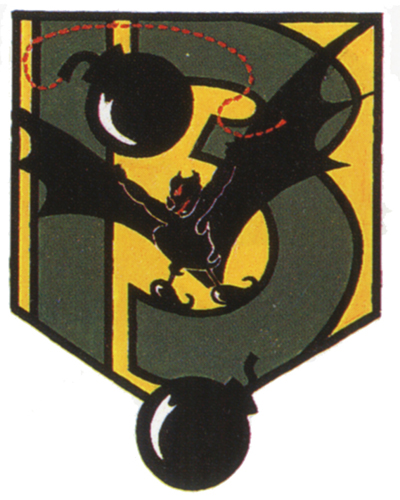
VP-HL-13 |

VP-24 |

VP-25 |
|
AIRCRAFT
THAT CARRIED THE BAT MISSILE
|

General
Motors TBM Avenger
BAT missile with fold-down fins.
Several
of these were used during the
early phases of the PELICAN/BAT testing program
(US
National Archives)
|
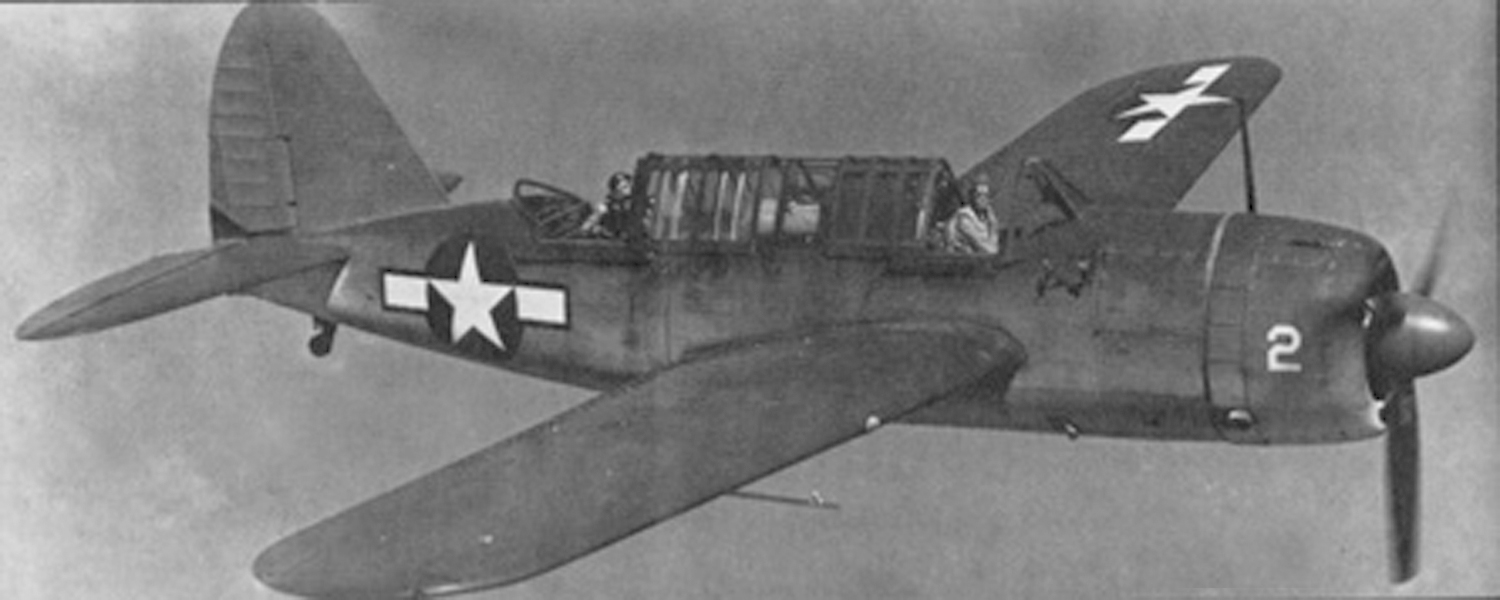
Brewster SB2A Buccaneer
Several of these were literally worn out during
the early phases of the
PELICAN/BAT testing being used as drop aircraft or as photo-chase
aircraft
|
| 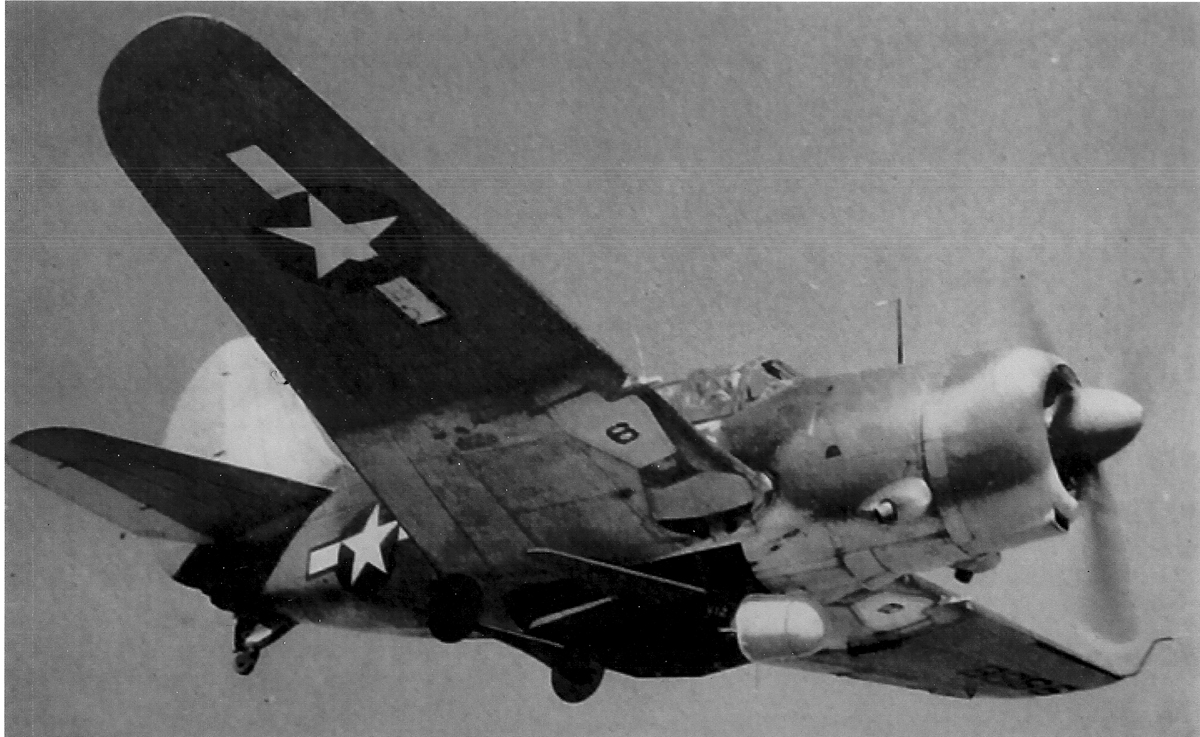
Curtiss SB2C Helldiver
(US National Archives)
|

Several
SB2C's were used as drop/photo-chase a/c and even run through
catapalt tests to access their suitability for BAT use aboard
aircraft-carriers. |
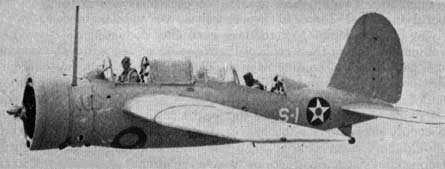
Brewster SBN
Used in early tests of PELICAN
|

At least one SBN was used in early tests of
PELICAN
Note cradle and umbilicals
|
| Additional A/C were used in the early test-phases
of this program, but not pictured here.
Beech Model 18, Northrop XBT-1, Northrop XBT-2 |

Martin JM-1 Marauder
|
| 
North
American PBJ Mitchell
Several of these were utilized
in the test phases of the entire family of devices
|

Lockheed
PV-1 Ventura
VP-152 and VP-153 were initially
trained to use PELICAN/BAT
but both Sqd.s were re-tasked as ground-attack aircraft
|

Grumman
F7F Tigercat
These
a/c were slated for testing/installation but it's doubtful this
happened
|
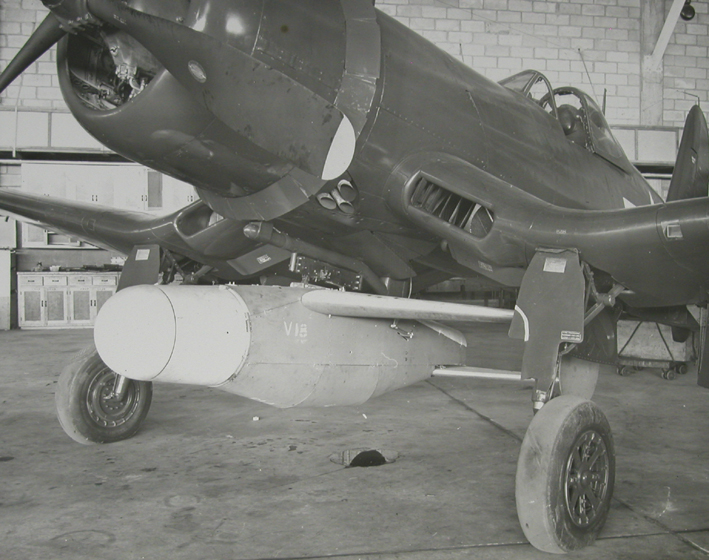
Vought
F4U Corsair
BAT slung
under Vought F4UCorsair (Brodie
Collection NARA)
Several F4U's were used as drop aircraft or as photo-chase aircraft
|

Boeing PB-1 (B-17E)
Two Mk 16 targets and Radar are suspended below the bomb-bay
|

Douglas B-23 Dragon
At
least one of these a/c was utilized in tests of the early
PELICAN airframe
|

Martin
PBM-3 Mariner
Several
were modified with radar and hardpoints for
BAT deployment but never made it out of the test phase
|

Consolidated PBY Catalina
Several
were modified with radar and hardpoints for
BAT deployment but never made it out of the test phase
|
|  Consolidated PB4Y-1
Consolidated PB4Y-1
A small handful of -1's were utilized as test-beds - note
wing hard-point
|

Consolidated
PB4Y-2B Privateer
The Privateer was an extensively modified B-24 Liberator
and
was the first aircraft to carry the BAT in squadron service
|
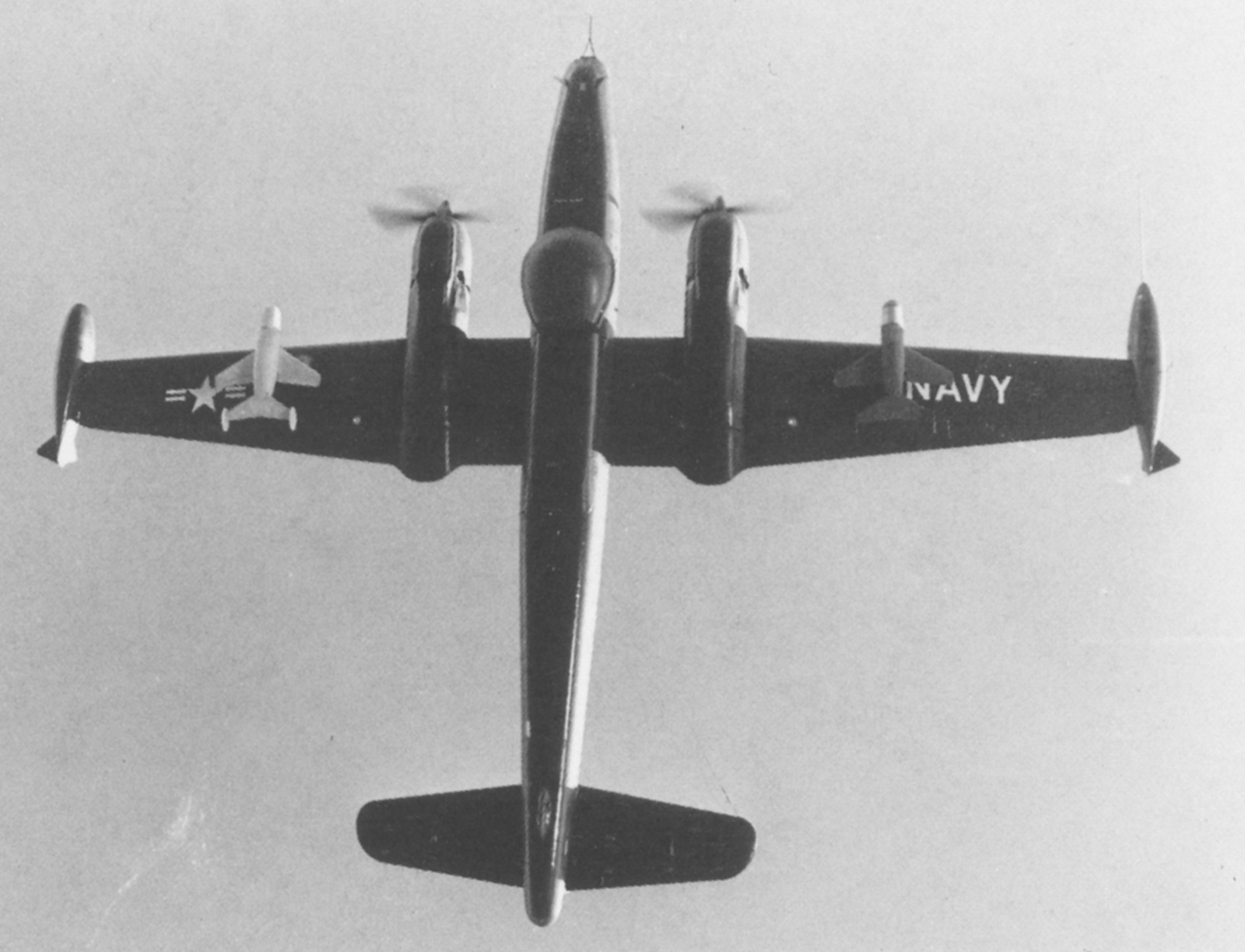
Lockheed
P2V Neptune
The BAT's in this post-war photo are
painted differently.
The starboard device is a BAT-0, and the port BAT may be a
Mod-1
|
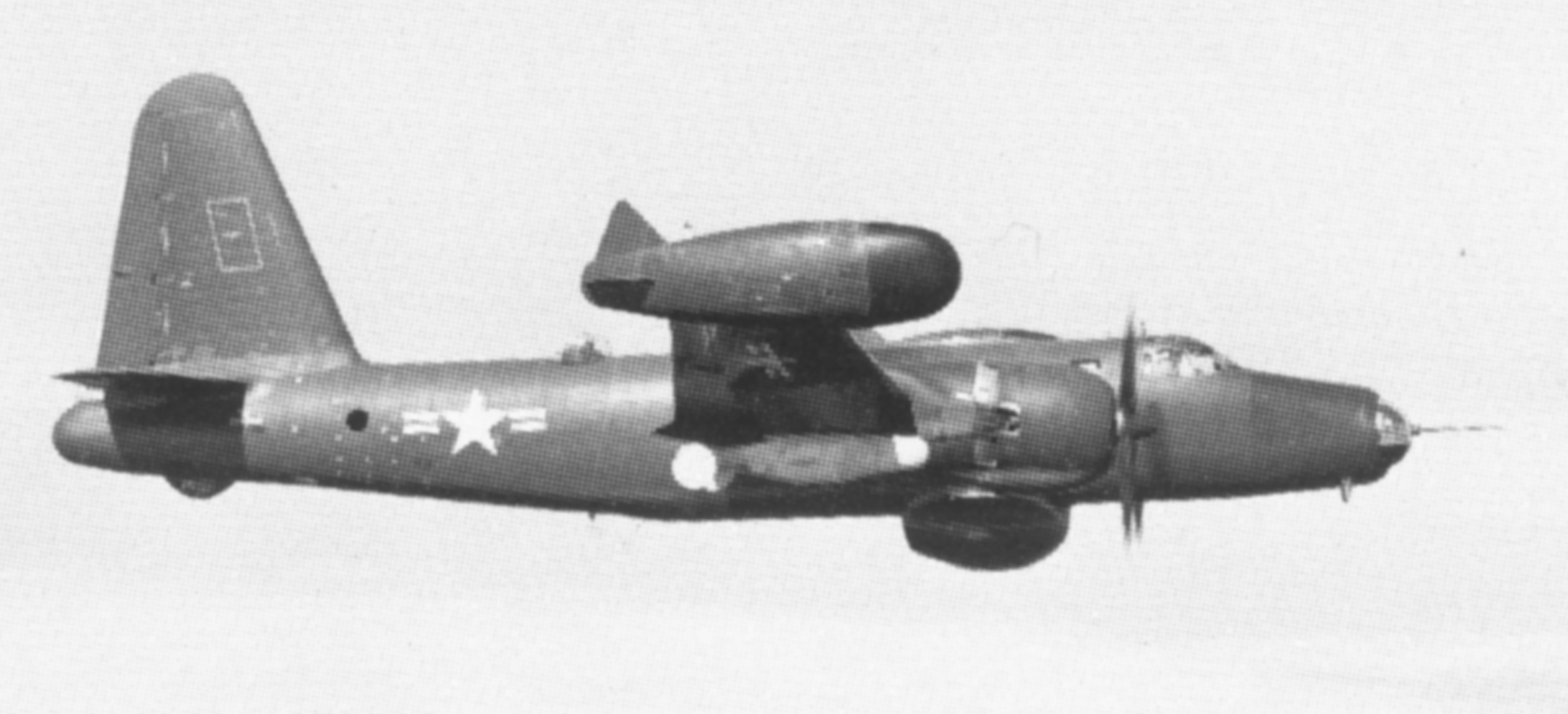
Neptunes
replaced Privateers in post-war squadron service and
the BAT finished it's development beneath these new haulers |
| |
There
is always some joker willing to pose great
photographs like this one. Point Mugu's BAT-1
has been hung beneath the port wing of a
Grumman A-6 Intruder operated by VAW-112(?)
|
| At
least seven airframes
exist in museum collections |

BAT-0
at the Admiral
Nimitz State Historic Site
(Hull #3304:via R. Koone) This BAT could really use a face-lift!
|
| 
BAT-1 at the Planes
of Fame Museum
(Hull #2780) (SCP)
|
|
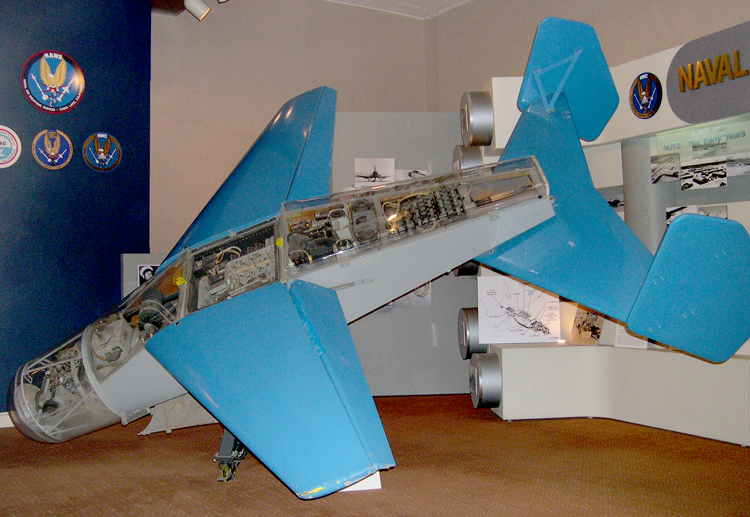
BAT-1
at NAWCWD
China Lake
(Hull #3049) (SCP) The only "intact" (albeit see-through)
bat known to exist. |

BAT-1
at the National
Institute of Standards and Technology
(Hull
#3222)
(SCP)
|
|

BAT-0 at the
NASM
Udvar-Hazy Center
(Hull #3047/818?) The
National Bureau of Standards donated this
particular Bat to the Smithsonian June, 1950
|

BAT-0 in deep
storage at the NASM
Udvar-Hazy Center
Still in Crate, but there are some electronics on board
(Hull #1093/986?) via:
Michael Neufeld
|

BAT-1 in deep
storage at the NASM
Udvar-Hazy Center
(Hull #2931) via: Michael Neufeld
|
| 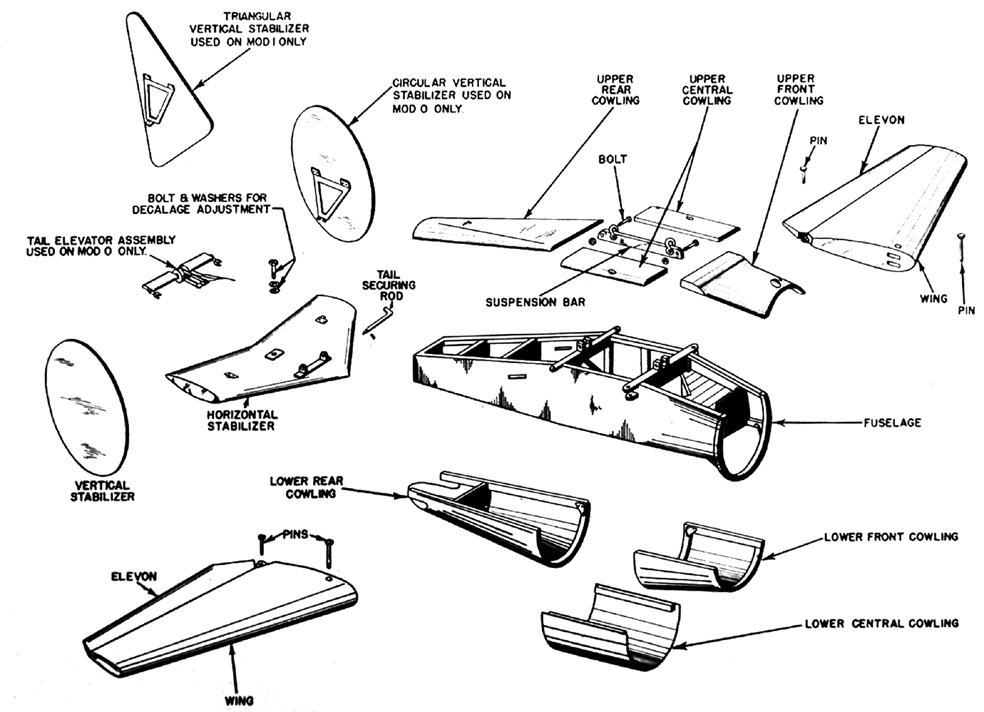
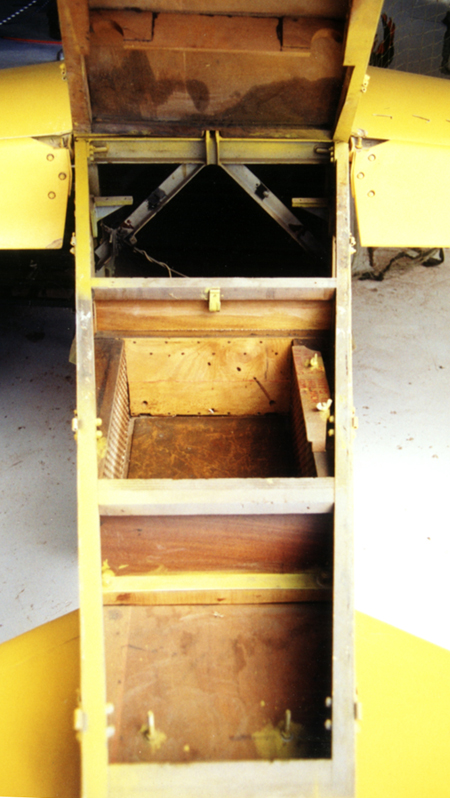
(L>R)
Exploded diagram of BAT-0 with BAT-1 tail fins in corner of
diagram. Coffin-like battery compartment of the POF BAT-1.
The Author personally inspected the craftsmanship of this particular
hull #2780. Nothing really clever - basic woodworking and
hardware fittings but built like a tank. All laminated surfaces
were still in terrific shape; all internal components were missing

 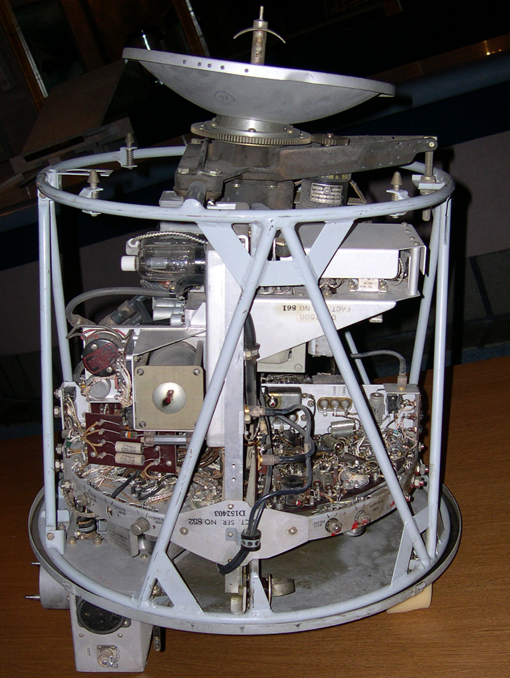
(L>R)
The China Lake BAT-1 has transparent nosecone, fuselage,
and battery box covers (see photo below) so that visitors
can see the 'guts' of this device. The China Lake BAT is unique
in that it is complete except for it's payload. This example
is
highly polished and carefully painted; any crudeness of the
original wood/plywood airframe has been neatly glossed-over.
All other BAT's that are known to this Author are merely empty
hulls. Spare BAT radar unit at China Lake.
|
BATS
& THE BAT MISSILE—SHARED ENGINEERING PROBLEMS
(animated
version of this image -
A. Amiotte)
 1.
Aerodynamic Problems—The Chiroptera employ
an inherently unstable, albeit highly maneuverable airframe
in order to pursue highly maneuverable targets. Engineers
intentionally selected an extremely stable glider design for
the BAT in order to eliminate control-problems during a task
that
did not demand
maneuverability (fixed shipping targets). A simple gyroscopic
autopilot (Bendix Aviation Corp) contributed to a smooth stabilized
flight that could be corrected onto the target by input from
the radar in the nosecone of the glider. 1.
Aerodynamic Problems—The Chiroptera employ
an inherently unstable, albeit highly maneuverable airframe
in order to pursue highly maneuverable targets. Engineers
intentionally selected an extremely stable glider design for
the BAT in order to eliminate control-problems during a task
that
did not demand
maneuverability (fixed shipping targets). A simple gyroscopic
autopilot (Bendix Aviation Corp) contributed to a smooth stabilized
flight that could be corrected onto the target by input from
the radar in the nosecone of the glider.
2. Send-Receive Problems—The
RADAR system in the BAT was based on a device called the ‘cavity-magnetron’
– an American invention, perfected by the British, &
now found in every household microwave oven. The device emitted
S-Band (92 mm) pulsed RADAR signals through a parabolic reflector
that
alternately collected the return-signal for processing by
a super-heterodyne receiver. It was easier to use one antenna
for both transmit & receive instead of separate antennas
but this means that the device could not transmit & receive
at the same time. The problem is that the receiver is designed
to listen for a faint echo, while the transmitter is designed
to send out a powerful pulse. If the receiver were directly
linked to the transmitter when a pulse is sent out, the receiver
would be overloaded & destroyed. The solution to this
problem is to include a circuit element that protects the
receiver, effectively becoming an open connection while the
transmit pulse was being sent, & then closing again immediately
afterward so that the receiver could pick up the echo. Contractions
of the muscles in the middle-ear of real echolocating bats
are synchronized with the production of echolocation sounds
which causes a transient loss in hearing sensitivity (self-deafening)
to solve the same problem.
3. Proximity Feed-back Problems—Chiroptera
and BAT faced the same problem of increasing reflected signal-strength
as either neared their target. Real bats compensate for changes
in signal-strength by changing the hearing threshold via precise
control over the tympanic reflex or via modulation of emitted
signal strength. Sadly, the creation of a receiver with sufficient
dynamic range to accommodate for increasing signal strength
as the missile approached the target posed a tremendous stumbling
block for the state-of-the-art 1940’s vacuum-tube electronics.
4. Azimuth, Range, & Elevation Problems—Differences
in arrival time and intensity of an echo at a bat’s
ears provide azimuth and elevation, while target-distance
is determined from the time delay between send/receive signals.
Chiroptera also employ a wide range of call structures, variations
in call amplitude, Doppler-correction, and changes in head
position to adjust for target location, size, and activity
- BAT and its’ vacuum tubes were limited to a fixed
frequency, non-steer-able antennae, and was subsequently easily
defeated by enemy RADAR-jamming strategies, or by complicated
target scenarios consisting of numerous targets of different
sizes.
|
|
ACKNOWLEDGEMENTS
Curatorial
& library staff at the following are gratefully acknowledged
for their assistance & their sense of good humor: NMAH,
NASM-DC, NASM-UHF, NIST, NARA, NHC-DC, USN Dept. Library,
NAS China Lake, China
Lake Photo archives, Goleta
Air and Space Musuem, NAS
Pt. Mugu, NAS
Patuxent River, SDAM, UW-NHC, Nimitz
Museum, & the History Channel.
NOTE:
This is very much a work in progress and is a teaser for book
project that is nearing completion. The material herein is
but small fraction of those archival materials that exist
in my collection. Nevertheless, further information is requested
from Aircrews and personnel who have had experience with these
systems. Photographic contributions and stories are appreciated!!
|
 Wishful thinking:
PELICANS in the PTO in 1943!
Wishful thinking:
PELICANS in the PTO in 1943! |